Operation Golden Pheasant was an emergency deployment of U.S. troops to Honduras in 1988, in response to Nicaraguan attacks on Contra logistics in Honduras.
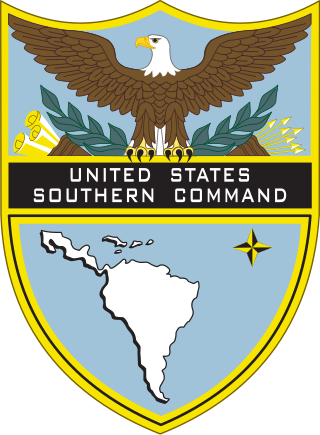
The United States Southern Command (USSOUTHCOM), located in Doral in Greater Miami, Florida, is one of the eleven unified combatant commands in the United States Department of Defense. It is responsible for providing contingency planning, operations, and security cooperation for Central and South America, the Caribbean, their territorial waters, and for the force protection of U.S. military resources at these locations. USSOUTHCOM is also responsible for ensuring the defense of the Panama Canal and the canal area.

The disaster recovery response to Hurricane Katrina in late 2005 included U.S. federal government agencies such as the Federal Emergency Management Agency (FEMA), the United States Coast Guard (USCG), state and local-level agencies, federal and National Guard soldiers, non-governmental organizations, charities, and private individuals. Tens of thousands of volunteers and troops responded or were deployed to the disaster; most in the affected area but also throughout the U.S. at shelters set up in at least 19 states.
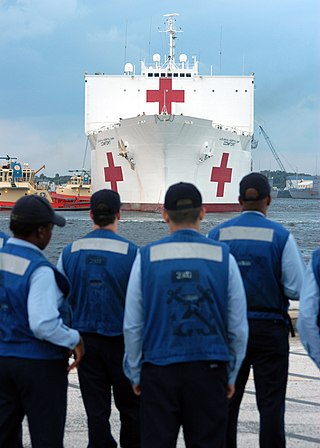
Joint Task Force Katrina was a joint operation between the United States Department of Defense and the Federal Emergency Management Agency created on September 1, 2005, at Camp Shelby, Mississippi to organize relief efforts along the Gulf Coast in the aftermath of Hurricane Katrina. The operation was headed by U.S. Army Lieutenant General Russel L. Honoré. Joint Task Force Katrina took over operations from United States Northern Command that had some elements in place before Hurricane Katrina struck the Gulf Coast.
Soto Cano Air Base is a Honduran military base 5 mi (8.0 km) to the south of Comayagua in Honduras. It houses 1,200–1,500 U.S. troops and is also used by the Honduran Air Force academy. The airbase became operational in 1940, changing the old location of the Honduras Air Force Academy in Toncontin, Tegucigalpa to Palmerola. It serves as one of the important bases to the US Military's presence in Central America.
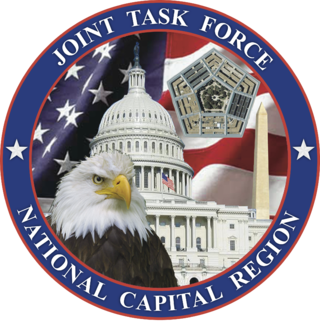
Joint Task Force-National Capital Region (JTF-NCR), formerly known as Joint Force Headquarters-National Capital Region (JFHQ-NCR), is directly responsible for ceremonial missions and the homeland security and defense of what is called the National Capital Region, which includes the Washington D.C. area as well as surrounding counties in Virginia and Maryland. Primarily made up of joint military units within the National Capital Region, the JTF-NCR assists federal and local civilian agencies and disaster response teams in the event that the capital area's security is or possibly could be breached by acts of terrorism. Officially activated on September 22, 2004, as JFHQ-NCR, the JTF-NCR is part of United States Northern Command.

The 13th Armored Corps Sustainment Command—the "Lucky 13th"—is a U.S. Army modular sustainment command which serves as a forward presence for expeditionary operations for a theater, or in support of a regional combatant commander. Corps Sustainment Commands (CSC), such as the 13th, synchronize distribution of supplies and services within their operational areas and provides distribution oversight. Formed at Fort Cavazos, Texas when the 1st Logistics Command deployed to Vietnam, the organization then known as the 13th Support Brigade was initially responsible for the training of technical services units to assume combat service support missions in Southeast Asia.

The 15th Marine Expeditionary Unit is one of seven such units currently in existence in the United States Marine Corps. The Marine Expeditionary Unit (MEU) is a Marine Air Ground Task Force (MAGTF) with a strength of about 2,200 personnel. The MEU consists of a command element, a reinforced infantry battalion, a composite helicopter squadron and a combat logistics battalion. The 15th MEU is currently based out of Marine Corps Base Camp Pendleton, California.
The Joint Task Force Alaska (JTF-AK), headquartered at Joint Base Elmendorf-Richardson in Alaska is a multi-service command composed of approximately 80 soldiers, sailors, airmen, coast guardsmen and civilian specialists. The task force is a homeland defense component of U.S. Northern Command that coordinates the land defense of Alaska and also coordinates military assistance to civil authorities. The JTF-AK's goals are stated as "detect, deter, prevent and defeat terrorist threats within the Alaskan joint area of operations". The task force also states that is conducts civil support as directed.
Joint Task Force (JTF) Shining Hope was the United States contribution to Operation Allied Harbor in 1999. The mission of JTF Shining Hope was to conduct foreign humanitarian assistance operations in support of US government agencies and non-governmental and international organizations engaged in providing humanitarian relief to Kosovar refugees in Albania and Macedonia. JTF Shining Hope was commanded by Major General William S. Hinton Jr., United States Air Force.

Joint Task Force Lebanon (JTF-L) is a U.S. European Command (EUCOM) operational unit established in 2006 and assigned responsibility for U.S. military support to the American Embassy in Beirut and to help U.S. Department of State led humanitarian assistance efforts that are providing aid to the people of Lebanon. Led by Commander, U.S. Sixth Fleet Navy Vice Admiral John "Boomer" Stufflebeem, JTF Lebanon officially accepted the mission on August 23, 2006 from U.S. Central Command (CENTCOM) units, which had been operating in the region since mid-July 2006 shortly after hostilities began between Israel and Hezbollah militants based in Lebanon.
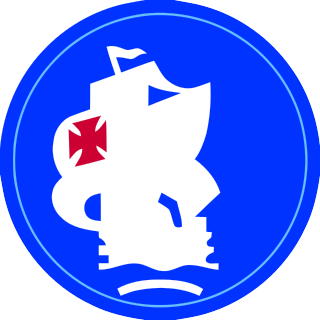
United States Army South is an Army service component command of United States Southern Command whose area of responsibility includes 31 countries and 15 areas of special sovereignty in Central and South America and the Caribbean. It is headquartered at Fort Sam Houston, Texas.
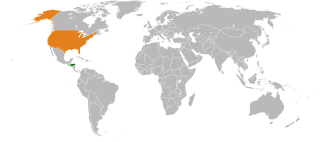
Honduras and the United States have had formal relations since 1830. There is close cooperation between the two countries, particularly in the areas of the War on Drugs while the National Port Authority in Puerto Cortés is part of the U.S. Bureau of Customs and Border Protection's Container Security Initiative.

The 864th Engineer Battalion is a combat engineer battalion of the United States Army based at Joint Base Lewis-McChord, Washington. The battalion is a subordinate unit of 555th Engineer Brigade.

U.S. Army Southern European Task Force, Africa(SETAF-AF), is the United States Army service component command of United States Africa Command, and is headquartered at Caserma Ederle and Caserma Del Din, Vicenza, Italy.

The 224th Joint Communications Support Squadron, located in Brunswick, Georgia, provides deployable tactical communications for Joint Task Force (JTF) Headquarters and Joint Special Operations Task Force (JSOTF) Headquarters. It can operate in environments without a reliable terrestrial network. The squadron operationally reports to the Joint Communications Support Element of the Joint Enabling Capabilities Command—a direct reporting unit of U.S. Transportation Command—at MacDill Air Force Base, Florida.

The AFP Joint Task Force - National Capital Region, known officially as the JTF-NCR or Task Force NCR, is one of the Armed Forces of the Philippines' Joint Task Forces assigned to combating Terrorism-Insurgency and act as support units to the Philippine National Police-National Capital Region in maintaining peace and order within Metro Manila.
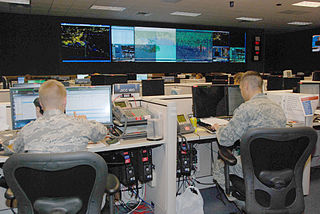
The 601st Air Operations Center is an active unit of the United States Air Force, assigned to the First Air Force and stationed at Tyndall Air Force Base, Florida. The unit plans, directs, and assesses air operations for the North American Aerospace Defense Command (NORAD), and the United States Northern Command (NORTHCOM), as the operations hub for First Air Force. It provides aerospace warning and control for NORAD Defensive Counter Air (DCA) activities. It also directs Air Force activities in support of NORTHCOM homeland security and civil support missions. The 601 AOC directs all air sovereignty activities for the continental United States.
The defence of the Cayman Islands has been and currently remains the responsibility of the United Kingdom.














